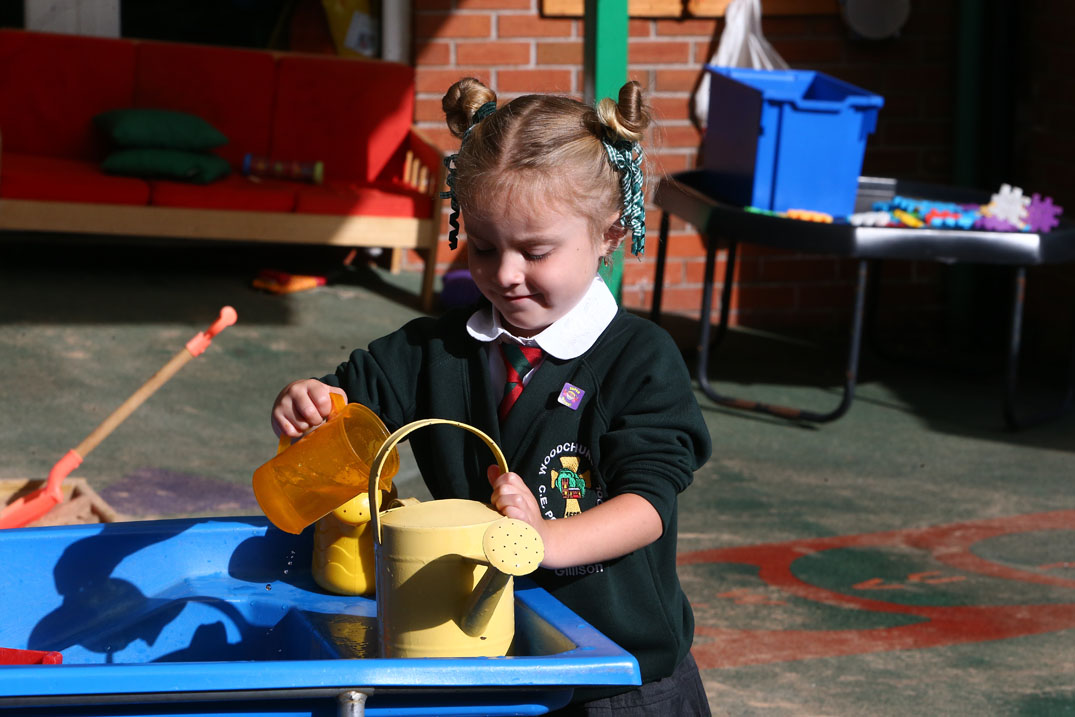MUSIC
“The School, Through Its Distinctive Christian Character, Is Outstanding At Meeting The Needs Of All Learners.” (SIAMS)
Intent
At Woodchurch CE Primary School, we believe that music is a universal language that embodies one of the highest forms of creativity. A high quality music education should engage and inspire pupils to develop a love of music and their talent as musicians, and so increase their self-confidence, creativity and sense of achievement. As pupils progress, they should develop a critical engagement with music, allowing them to compose, and to listen with discrimination to the best in the musical canon.
Children experience music in a variety of ways. Weekly lessons in develop skills and examine the elements of music. While all children in Key Stage 1 experience a range of listening, composing and performing activities, in Key Stage 2 there is a greater emphasis on listening and performing. In both Key Stages the children follow units from Charanga.
Specialist music staff visits the school to teach brass and viola. In addition to our weekly hymm practice, children are invited across Key Stage 2 to sing in the school choir.
The national curriculum for music aims to ensure that all pupils:
- Perform, listen to, review and evaluate music across a range of historical periods, genres, styles and traditions, including the works of the great composers and musicians
- Learn to sing and to use their voices, to create and compose music on their own and with others, have the opportunity to learn a musical instrument, use technology appropriately and have the opportunity to progress to the next level of musical excellence
- Understand and explore how music is created, produced and communicated, including through the inter-related dimensions: pitch, duration, dynamics, tempo, timbre, texture, structure and appropriate musical notations.
By the end of each key stage, pupils are expected to know, apply and understand the matters, skills and processes specified in the relevant programme of study.
KS1 Pupils should be taught about:
- Use their voices expressively and creatively by singing songs and speaking chants and rhymes
- Play tuned and untuned instruments musically
- Listen with concentration and understanding to a range of high-quality live and recorded music
- Experiment with, create, select and combine sounds using the inter-related dimensions of music.
Pupils should be taught to:
| Skills for the Music Curriculum KS1 | Year 1 & 2 |
|---|---|
|
To perform |
• Take part in singing, accurately following the melody. |
|
To compose |
• Create a sequence of long and short sounds. |
|
To transcribe |
• Use symbols to represent a composition and use them to help with a performance. |
|
To describe music |
• Identify the beat of a tune. |
KS2 Pupils should be taught to sing and play musically with increasing confidence and control. They should develop an understanding of musical composition, organising and manipulating ideas within musical structures and reproducing sounds from aural memory.
Pupils should be taught to:
- Play and perform in solo and ensemble contexts, using their voices and playing musical instruments with increasing accuracy, fluency, control and expression
- Improvise and compose music for a range of purposes using the inter-related dimensions of music
- Listen with attention to detail and recall sounds with increasing aural memory
- Use and understand staff and other musical notations
- Appreciate and understand a wide range of high-quality live and recorded music drawn from different traditions and from great composers and musicians
- Develop an understanding of the history of music
Pupils should be taught to:
| Skills for the Music Curriculum KS2 | Year 3 & Year 4 | Year 5 & Year 6 |
|---|---|---|
|
To perform |
• Sing from memory with accurate pitch. |
• Sing or play from memory with confidence. |
|
To compose |
• Compose and perform melodic songs. |
• Create songs with verses and a chorus. |
|
To transcribe |
• Devise non-standard symbols to indicate when to play and rest. |
• Use the standard musical notation of crotchet, minim and semibreve to indicate how many beats to play. |
|
To describe music |
• Use the terms: duration, timbre, pitch, beat, tempo, texture and use of silence to describe music. |
• Choose from a wide range of musical vocabulary to accurately describe and appraise music including:
• Describe how lyrics often reflect the cultural context of music and have social meaning. |
CONTACT US
Headteacher: Mr Brian McGregor
Church Lane, Woodchurch
Wirral CH49 7LS
0151 677 4788
schooloffice@woodchurch-pri.wirral.sch.uk

